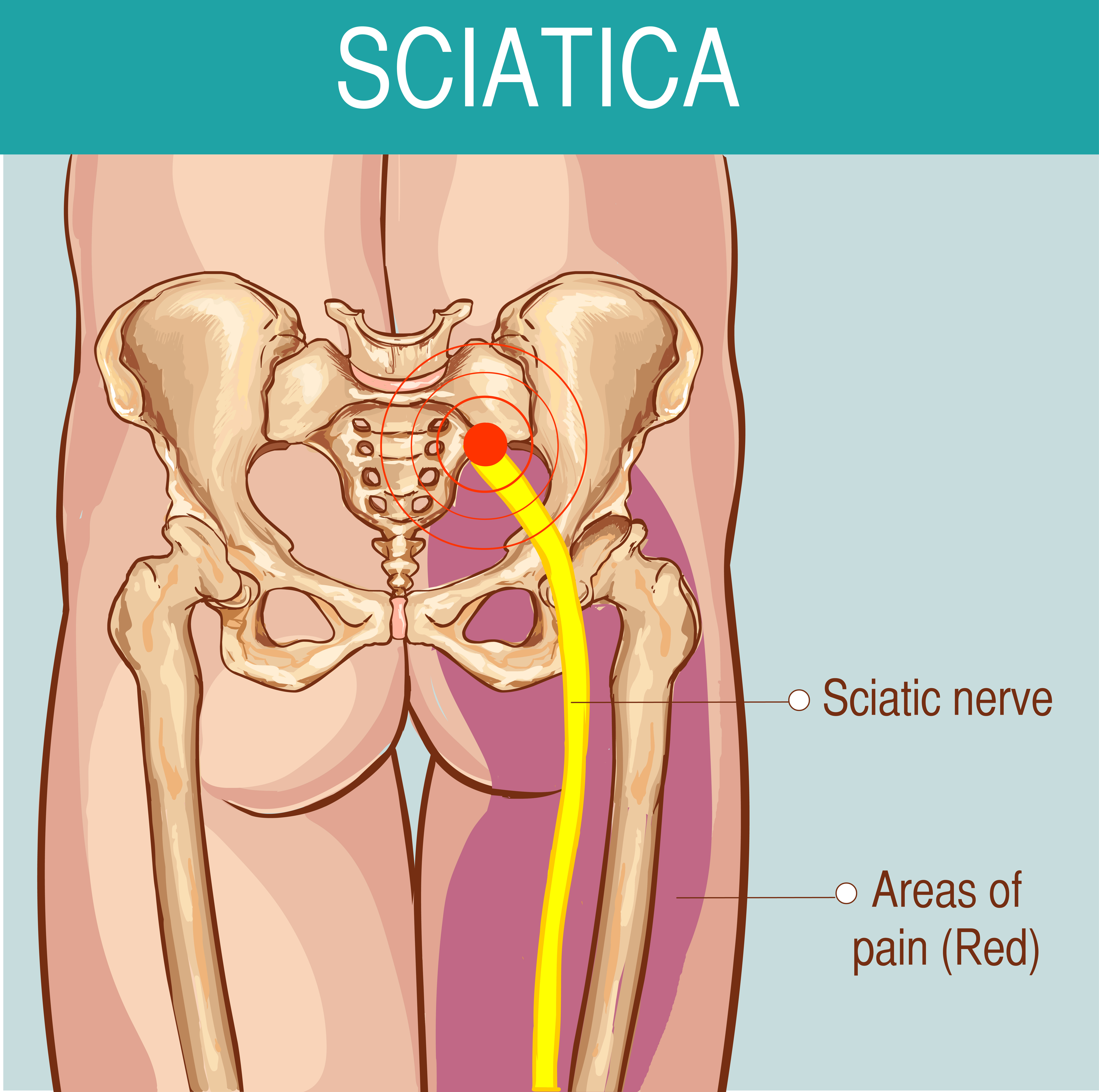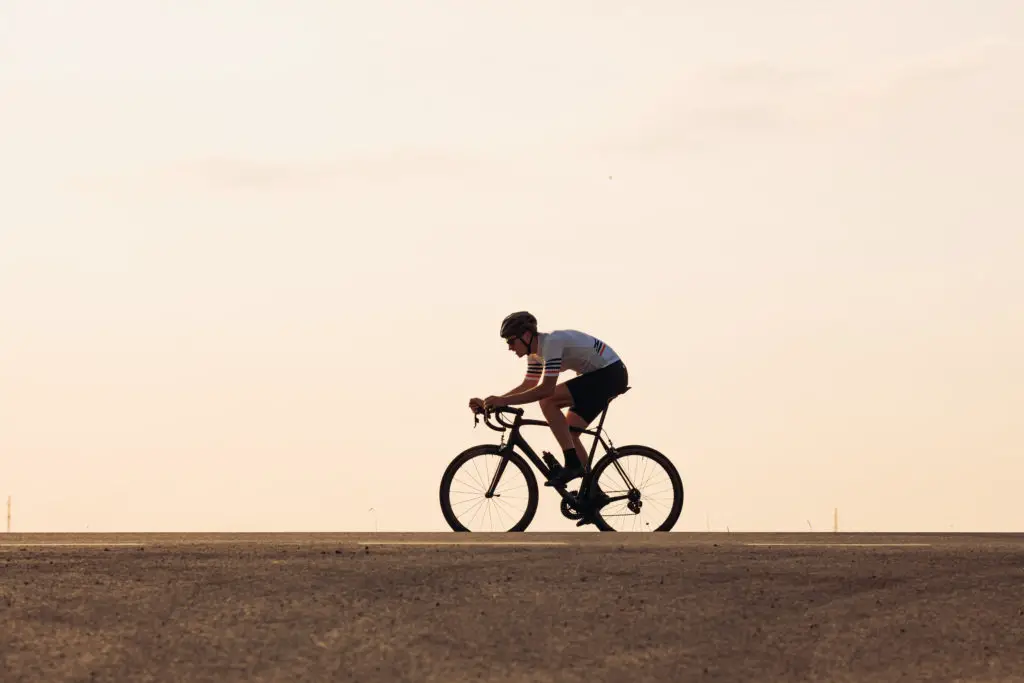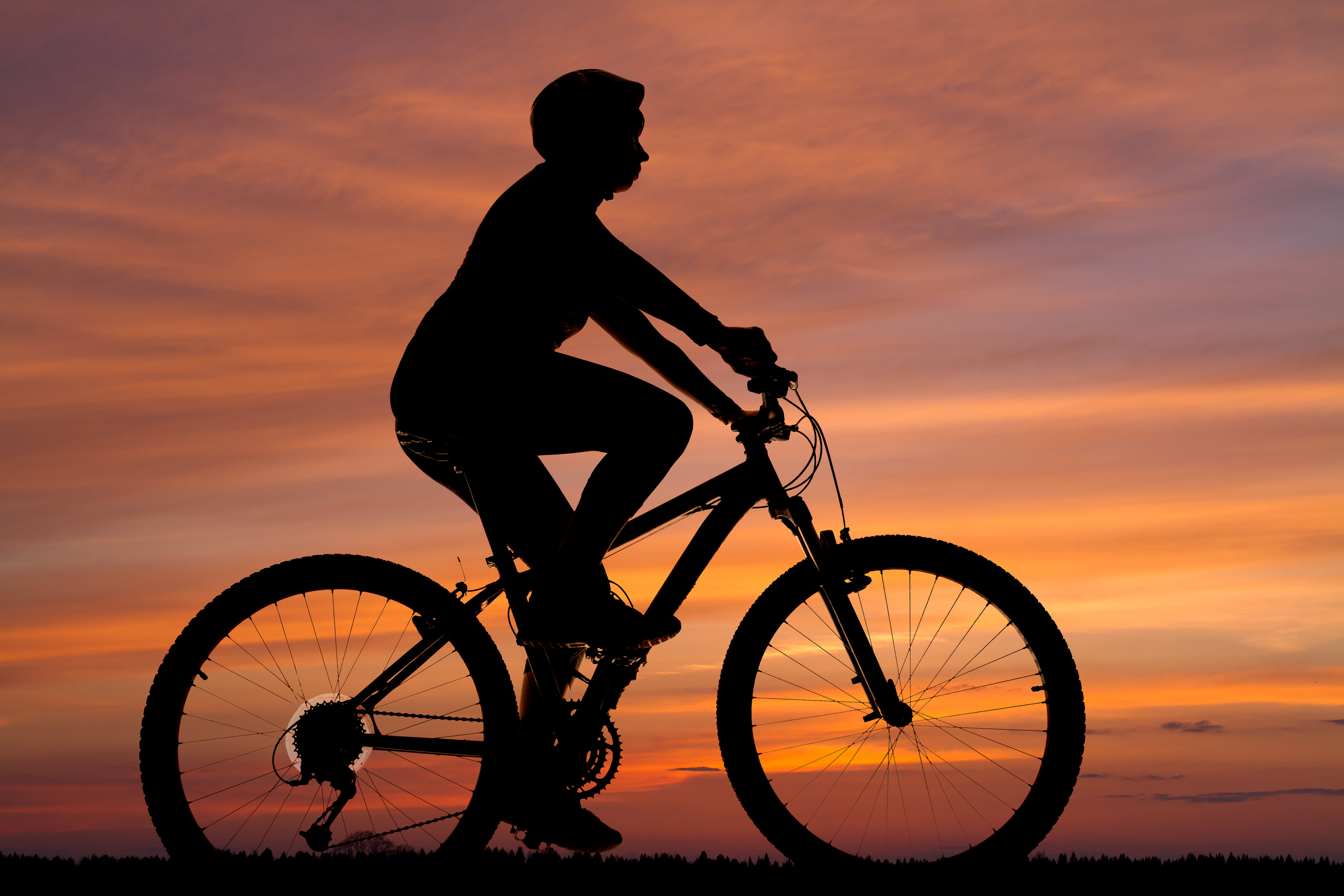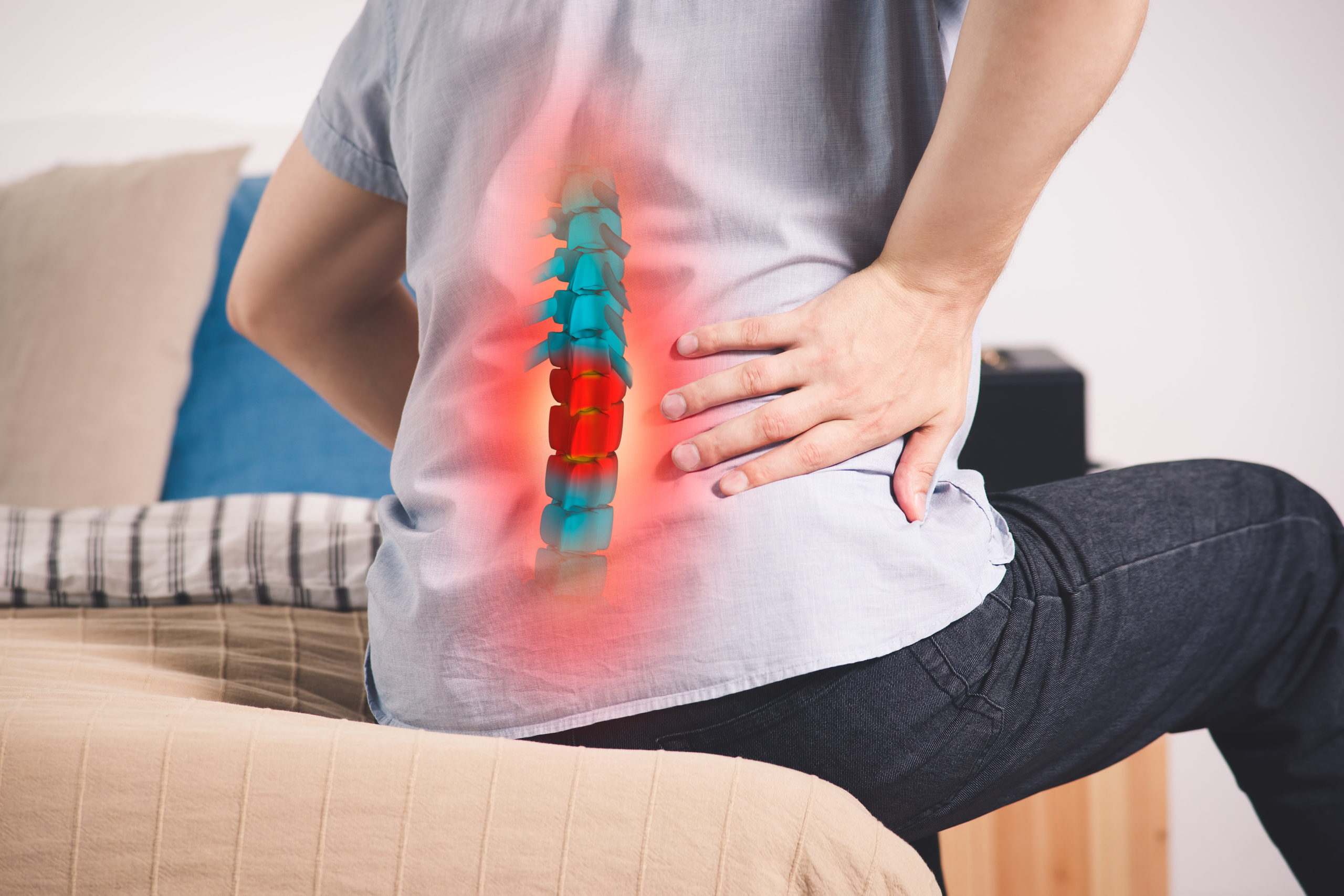Cycling is a great form of exercise that people of all levels enjoy. However, there are some health conditions that can be caused or worsened by regular cycling. Is sciatica one of these conditions?
Many cyclists are prone to experience sciatica and similar back pain because the forward-leaning position in cycling can put pressure on their spine and sciatic nerve. This can be avoided with proper bike positioning, a more comfortable seat, and regular stretching.
Sciatica is a very common injury that millions of athletes and sedentary people alike experience every year. Due to the body positioning and other factors involved in cycling, those who choose to take up this sport are left particularly vulnerable to sciatica. In this article, we will discuss the root causes of sciatica and how to prevent them in cycling and other areas of your life.
What is Sciatica?
Sciatica refers to bursts of pain that begin at the lower back and radiate down one or both sides of the leg. Overall, about 40% of people in the United States experience sciatica at some point in their life. If you’ve heard someone say that they “slipped a disk,” this is the condition they are referring to.
Sciatica occurs just below that “disk” in your back, the gel-like area that separates and cushions the vertebrae of your spine. The sensation of “slipping a disk” comes from the pain that results when two of the vertebrae come out of place, or when a herniated disk presses into the sciatic nerve of your lower back.
The sciatic nerve is no small thing. In fact, it is the longest and thickest nerve in your body, being almost as thick as a finger. This is partly why the pain can be so intense when pressure is put on the root of the sciatic nerve from a herniated disk. Sciatica also refers to inflammation, compression, or irritation to the nerve, which causes a similar adverse reaction.
Your spine is an incredible thing. It can bend and stretch into very unlikely positions, given the appropriate skill and practice. This being the case, something like cycling might seem pretty moderate. However, the condition of sciatica, while it can result from a sudden jolt or movement, is also affected by what you do every day, such as holding a position contrary to the spine’s alignment for extended periods of time. This is why cyclists must be careful as to how they practice the sport. They should also take precautionary measures to prevent injuries.

What are the Causes of Sciatica?
Sciatic pain is caused by a slipped disk that compresses the root nerve. It is also caused by spondylolisthesis, a condition that happens when one vertebra is thrust out of line with the one above it. The newly extended bone of the spine can then pinch the sciatic nerve. But how is this caused in the first place? Let’s discuss.
- Sedentary lifestyle. This might seem kind of odd, considering intense cycling is a risk factor for sciatica, but it’s true. People who do not exercise regularly are more likely to experience sciatica than those who do. Exercise keeps the muscles loose and the spine flexible. There is nothing better to prevent sciatica than to develop a regular habit of exercise as you age.
- Obesity. You may have heard about pregnant women being at increased risk for sciatica. That is, in part, because the baby’s weight and position can press down on the sciatic nerve and create intense back pain. Similarly, obese populations with extra weight are at higher risk for developing sciatica.
- Heavy lifting. We mean this literally. If you have a job or occupation that requires the frequent lifting of heavy objects, such as moving or installing furniture, this can cause sciatica. The condition can develop immediately or over long periods of time.
- Frequently moving the spine out of place. Stretching is one thing. In fact, it may help to treat and prevent sciatica. But doing violent hip twists or frequent cycling that changes the pelvic position for extended periods of time can lead to sciatica.
- Diabetes. This is a more rare cause, but it’s still applicable. Diabetes can damage and cause inflammation to all the nerves of the body, including the spine. This chronic disease leaves you more susceptible to sciatica.
How Can Cycling Cause Sciatica?
If you’ve ever observed road bicycle racing, you’ll notice something about the cyclists. They are all hunched forward over their handlebars as far as possible, head down and body bent against the wind to increase speed. This is a great position for fast bicycle riding, but it’s not so great for your spine.
The nature of cycling is forward and hunched, with the pelvis out of alignment and the spine bent into an L shape for extended periods of time. All these factors can wear down your bones and cause them to press against the sciatic nerve. It’s the same reason that you experience back pain after slouching or sitting for too long.
The hard material of most bicycle seats is an additional factor. If the seat is pressing too much into your gluteal area, it can compress and irritate the sciatic nerve, leading to immediate or gradual pain when cycling.
Another frequent problem that causes sciatica is the simple nature of cycling. You move your legs back and forth, and your hips move with you. This can also wear down your bones and cause inflammation of the sciatic nerve. It can even cause you to slip a disk if you are not careful.

Be sure to also read my other article on Cycling & Knee Pain.
How to Avoid Sciatica When Cycling?
According to a recent health guide written by A.D.A.M. Inc., between 30-70% of cyclists experience back pain, including sciatica, when riding. We know what you’re thinking… Sciatica sounds like a painful risk to take for cycling. Should I stop riding bikes all together? The answer is that you don’t have to! There are preventative measures to take that can help you avoid sciatica when cycling.
The first and easiest fix is to get the right bicycle seat. The way it feels is important. If your seat is rock-hard or approaching that, then it’s probably too hard. The best solution to this is typically a bike cover. A good rule of thumb is this: your seat cover shouldn’t feel rock-hard, but it shouldn’t feel like your pillow either. You should also consider the shape of the seat. Wider seats and seat cushions can offer more support and stability while riding. To get some ideas of good seat cushions, check these out.
Another thing to consider is the height of the handlebars. We already mentioned that leaning too far forward can cause compression of the spine, leading to sciatic nerve pain. So if you are cycling hunched over your handlebars most of the time, raise them up. They should be raised to the height of your seat, or even higher, depending on your preference. Any lower than that, and you’d better be racing.
Consider your position as well. Is your spine bent, or are you sitting upright? Maintaining good posture is vital to avoiding sciatica when cycling. If your handlebars or seat do not allow you to practice good posture, consider buying handlebar extensions or an ergonomically designed seat to help you ride comfortably and safely.
How to Avoid Sciatica in General
We have already discussed some risk factors that contribute to sciatica, such as obesity, chronic disease, and a sedentary lifestyle. But there are even more things you can do to avoid sciatica, whether you are a cyclist or not.
- Maintain an active lifestyle. Working out regularly keeps your muscles strong and supports your spine. Gentle exercise can prevent herniation or even help you heal from sciatica. As a preventative measure, focusing on strengthening the abdominal muscles by doing exercises such as pushups, forearm planks, and butterfly sit-ups may be particularly helpful.
- Stretch frequently. Stretching makes you more flexible, and when you are more flexible, you are less prone to muscle injury and herniation. Regular stretching also makes your joints more durable, which helps in preventing sciatica.
- Avoid smoking. Smoking contributes to a number of adverse health conditions including sciatica. Believe it or not, the nicotine in tobacco is the main culprit, accelerating the decay of ligaments and spinal tissue. It can weaken your bones and cause the vertebral disks to deteriorate more quickly. Avoid smoking at all costs!
- Eat foods high in magnesium. Magnesium is known as the bone nutrient for a reason. Not only does it help to create bone, but this nutrient also aids in muscle and nerve function. According to a recent study, people with higher intakes of magnesium also have a higher bone mineral density. This helps reduce the risk of bone fractures and other issues like sciatica. Read more on the nutrients and minerals needed to build healthy bones here.
Wondering what foods are high in magnesium? Here are a few:
- Spinach
- Bananas
- Avocados
- Chickpeas
- Whole grains
- Tofu
- Cashews
So next time you go to make a salad, opt for some of these bone-healthy ingredients.
How to Know If You Have Sciatica

If you’ve ever leaned forward and suddenly experienced a spasm of pain, which radiates from the back of your upper thigh all the way down your leg, then you know what sciatica feels like. Some people describe the pain of sciatica to be like an electric shock, an unpleasant burning sensation, or a stabbing pulse. These pains may be constant or they may come and go.
Sciatic pain usually occurs down only one leg at a time, though in some rare cases, the sciatic nerves can both be pinched simultaneously, sending pain down both legs. In extreme cases, sciatica may cause a loss of bowel and bladder control. This symptom, along with numbness in the genital and “seat” area, may be indicative of a greater medical problem called Cauda Equina Syndrome. This syndrome requires immediate medical attention. While most sciatic pain goes away on its own within a month or so, if you experience these symptoms, you should see a doctor immediately.
While a sudden burst of pain that begins at the gluteal area and travels down the back of the leg is how most people describe the sensation of sciatica, it is also characterized by muscle weakness or numbness in the legs and feet. These are both additional symptoms to look out for.
How to Heal from Sciatica and Other Biking Injuries
True and lasting injury to the sciatic nerve is rare, and the term “sciatica” is often used to blanket all pain relating to the sciatic nerve. Luckily, these injuries typically heal on their own over a span of two to six weeks. Other biking injuries, such as chronic knee pain and pulled muscles, are caused by overuse and may need even more time to heal.
When tackling sciatica and other injuries caused by cycling, we can use the REST acronym:
Recover sufficiently. Giving time between workouts and breaking up your mileage is important. If you experience sciatica during or after cycling, it may be helpful to apply hot and cold packs to the affected area. Heat releases tension in the muscles while cold numbs the area and calms inflammation. Use whatever pack feels best to aid in your recovery.
Exercise gently. During the two to six weeks of recovery especially, if you choose to exercise, do so gently. Exercise can still be beneficial for keeping the blood flowing to the injured areas and for helping your muscles stay strong. However, best to avoid cycling and any exercise that puts strain on your lower back until you heal. Always listen to your body. If something feels wrong, it probably is.
Stretch frequently. Stretch, stretch, stretch! You should not stretch to the point of serious pain, but a daily loosening of the ligaments can certainly help in recovering from sciatica. If you need some ideas of poses, here are seven stretches that you can do to help ease lower back pain. Just be sure to ease into them if you are currently suffering from sciatica.
Train in other sports, incorporating low-impact exercises like swimming and yoga. Any athlete knows that cross-training is important. Cycling puts particular strain on the back, seat, neck, and wrist areas, so try to break up your workouts by doing exercises that work out the different muscle groups.
My Recommended Gear for Year-Round Cycling on a Budget
It took me years of trial and error to figure out the best and most affordable setup for my daily bike commuting. I would only recommend the gear that is good quality for a good price. Here’s my full year-round gear recommendation guide.
Want to know how much your cycling gear should cost? Check out my guide with different budget options here.
Ride on!

